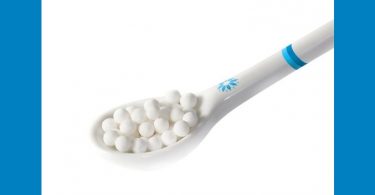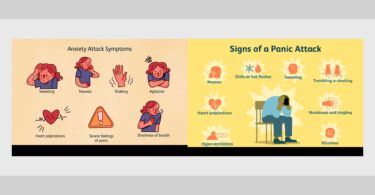Teenagers may be involved with legal or illegal drugs in various ways. Experimentation with drugs during adolescence is common. Unfortunately, teenagers often don’t see the link between their actions today and the consequences tomorrow. They also have a tendency to feel indestructible and immune to the problems that others experience.
Using alcohol and tobacco at a young age increases the risk of using other drugs later. Some teens will experiment and stop, or continue to use occasionally, without significant problems. Others will develop a dependency, moving on to more dangerous drugs and causing significant harm to themselves and possibly others.
Adolescence is a time for trying new things. Teens use drugs for many reasons, including curiosity, because it feels good, to reduce stress, to feel grown up or to fit in. It is difficult to know which teens will experiment and stop and which will develop serious problems.
Who is At Risk?
Teenagers at risk for developing serious alcohol and drug problems include those:
• with a family history of substance abuse
• who are depressed
• who have low self-esteem
• who feel like they don’t fit in or are out of the mainstream
Teenagers abuse a variety of drugs, legal and illegal.
• Alcohol
• Tobacco: Teens who smoke are three times more likely than nonsmokers to use alcohol, eight times more likely to use marijuana, and 22 times more likely to use cocaine. Smoking is associated with a host of other risky behaviors, such as fighting and engaging in unprotected sex.
• Prescribed medications
• Inhalants: Known by such street names as huffing, sniffing and wanging, the dangerous habit of getting high by inhaling the fumes of common household products is estimated to claim the lives of more than a thousand children each year. Many other young people, including some first-time users, are left with serious respiratory problems and permanent brain damage.
• Over-the-counter cough, cold, sleep, and diet medications (such as Corex, phencidyle,etc.)
• Marijuana, hashish,bhang
• Stimulants: The possible long-term effects include tolerance and dependence, violence and aggression, malnutrition due to suppression of appetite. Crack, a powerfully addictive stimulant, is the term used for a smokeable form of cocaine.
• Club drugs: This term refers to drugs being used by teens and young adults at all-night dance parties such as “raves” or “trances,” dance clubs, and bars. MDMA (Ecstasy), GHB, Rohypnol (Rophies), ketamine, methamphetamine, and LSD are some of the club or party drugs gaining popularity. Because some club drugs are colorless, tasteless, and odorless, they can be added unobtrusively to beverages by individuals who want to intoxicate or sedate others. In recent years, there has been an increase in reports of club drugs used to commit sexual assaults.
• Depressants: These are drugs used medicinally to relieve anxiety, irritability, tension. There is a high potential for abuse and, combined with alcohol, effects are heightened and risks are multiplied.
• Heroin: Several sources indicate an increase in new, young users across the country who are being lured by inexpensive, high-purity heroin that can be sniffed or smoked instead of injected. Heroin has also been appearing in more affluent communities.
• Steroids: Anabolic steroids are a group of powerful compounds closely related to the male sex hormone testosterone.
The use of illegal drugs is increasing, especially among young teens. The average age of first marijuana use is 14, and alcohol use can start before age 12. The use of marijuana and alcohol in high school has become common.
Drug use is associated with a variety of negative consequences, including increased risk of serious drug use later in life, school failure, and poor judgment which may put teens at risk for accidents, violence, unplanned and unsafe sex, and suicide.
Warning Signs of Teen Substance Abuse
Physical
• fatigue
• repeated health complaints
• red and glazed eyes
• lasting cough
Emotional
• personality change
• sudden mood changes
• irritability
• irresponsible behavior
• low self-esteem
• poor judgment
• depression
• general lack of interest
Family
• starting arguments
• negative attitude
• breaking rules
• withdrawing from family
• secretiveness
School
• decreased interest
• negative attitude
• drop in grades
• many absences
• truancy
• discipline problems
Social problems
• new friends who make poor decisions and are not interested in school or family activities
• problems with the law
• changes to less conventional styles in dress and music
Some of the warning signs listed above can also be signs of other problems. Parents may recognize signs of trouble but should not be expected to make the diagnosis.
Consulting a physician to rule out physical causes of the warning signs is a good first step. This should often be followed or accompanied by a comprehensive evaluation by a psychiatrist or mental health professional.
Substance Abuse Treatment
Parents can help through early education about drugs, open communication, good role modeling, and early recognition if problems are developing. If there is any suspicion that there is a problem, parents must find the most appropriate intervention for their child.
The decision to get treatment for a child or adolescent is serious. Parents are encouraged to seek consultation from a mental health professional when making decisions about substance abuse treatment for children or adolescents.
Parents and families must be informed consumers and should be involved in their child’s recovery. Here are some important things to consider:
No single treatment is appropriate for all teens.
It is important to match treatment settings, interventions, and services to each individual’s particular problems and needs. This is critical to his or her ultimate success in returning to healthy functioning in the family, school, and society.
Effective treatment must attend to the multiple needs of the individual — not just the drug use.
Any associated medical, psychological, social, and cognitive problem must be be addressed.
Remaining in treatment for an adequate period of time is critical for treatment effectiveness and positive change.
Each person is different and the amount of time in treatment will depend on his or her problems and needs. Research shows that for most individuals, the beginning of improvement begins at about 3 months into treatment. After this time, there is usually further progress toward recovery. Length of stay in a residential program can range from 8 to 18 months, depending upon the individual’s willingness and commitment.
Counseling (individual and/or group) and other behavioral therapies are critical components of effective treatment.
In therapy, teens look at issues of motivation, build skills to resist drug use, replace drug-using activities with constructive and rewarding behaviors, and improve problem-solving skills. Behavioral therapy also facilitates interpersonal relationships and the teen’s ability to function in the home and community.
Addicted or drug-abusing individuals with coexisting mental disorders should have both disorders treated in an integrated way.
Because addictive disorders and mental disorders often occur in the same individual, individuals should be assessed and treated for the co-occurrence of the other type of disorder.
Medical detoxification is only the first stage of addiction treatment and by itself does little to change long-term drug use.
Medical detoxification safely manages the acute physical symptoms of withdrawal associated with stopping drug use. While detoxification alone is rarely sufficient to help addicts achieve long-term abstinence, for some individuals it is a strongly indicated precursor to effective drug addiction treatment.
Treatment does not need to be voluntary to be effective.
Strong motivation can facilitate the treatment process. Sanctions or enticements in the family, school setting, or juvenile justice system can increase significantly both treatment entry and retention rates and the success of drug treatment interventions.
Recovery from addiction can be a long-term process and frequently requires multiple episodes of treatment.
As with other chronic illnesses, relapses to drug use can occur during or after successful treatment episodes. Addicted individuals may require prolonged treatment and multiple episodes of treatment to achieve long-term abstinence and fully restored functioning. Participation in self-help support programs during and following treatment often is helpful in maintaining abstinence. Parents should ask what aftercare treatment services are available for continued or future treatment.
Role of Homoeopathy in Addictions
Homeopathy is a non-toxic system of medicine that uses highly-diluted remedies to treat illness and relieve discomfort in a wide variety of health conditions. It is thought that homeopathic remedies are able to stimulate a person’s bodily systems to deal with stress and illness more efficiently. Research is currently being undertaken to understand how and why these remedies work on the mental and physical level. Specific homeopathic remedies may be helpful during the period of withdrawal from alcohol or drugs.
Holistic approaches to addiction and alcoholism can be of great assistance throughout the stages of recovery. From detoxification to reducing stress and improving mental and physical well being, holistic approaches play a vital role in regaining personal balance.
For the recovering addict, holistic approaches should be accompanied by a professional treatment plan but can be effective well beyond the initial recovery phase.
Recent scientific studies have demonstrated dramatically improved success rates with the addition of holistic treatment approaches.
Alcoholism is a chronic, often progressive disease that can be fatal. The condition involves a preoccupation with alcohol and impaired control over alcohol intake. Alcoholism usually involves physical dependence on the drug alcohol, but genetic, psychological and social factors contribute to this addiction.
——————————————–
Dr. Samir Chaukkar
M.D. (Hom) P.G.Diploma-Addictions treatment and prevention (Canada)
Consulting Homoeopath and Addictions Counsellor
Professor-Materia Medica, Y.M.T.Homoeopathic College and P.G.Institute, Navi Mumbai





